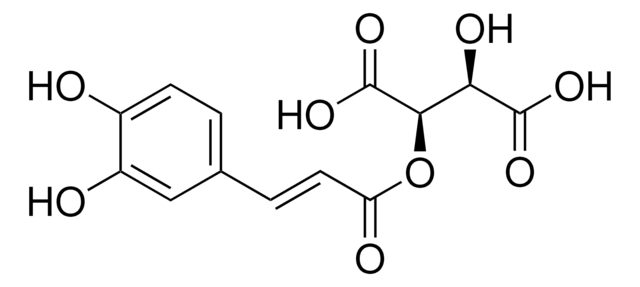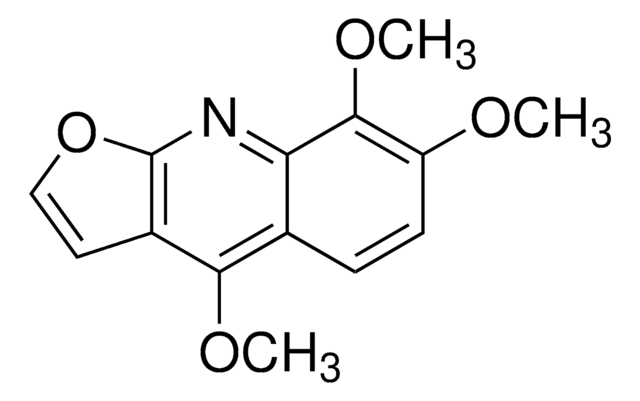サイズを選択してください
サイズを選択してください
About This Item
おすすめの製品
由来生物
synthetic
アッセイ
≥97% (HPLC)
フォーム
powder
保管条件
protect from light
色
off-white
溶解性
ethyl acetate: 50 mg/mL
DMSO: soluble
ethanol: soluble
保管温度
−20°C
SMILES記法
Oc1ccc(\C=C\C(=O)OCCc2ccccc2)cc1O
InChI
1S/C17H16O4/c18-15-8-6-14(12-16(15)19)7-9-17(20)21-11-10-13-4-2-1-3-5-13/h1-9,12,18-19H,10-11H2/b9-7+
InChI Key
SWUARLUWKZWEBQ-VQHVLOKHSA-N
遺伝子情報
human ... NFKB2(4791)
アプリケーション
生物化学的/生理学的作用
特徴および利点
保管分類コード
11 - Combustible Solids
WGK
WGK 3
引火点(°F)
Not applicable
引火点(℃)
Not applicable
個人用保護具 (PPE)
dust mask type N95 (US), Eyeshields, Gloves
適用法令
試験研究用途を考慮した関連法令を主に挙げております。化学物質以外については、一部の情報のみ提供しています。 製品を安全かつ合法的に使用することは、使用者の義務です。最新情報により修正される場合があります。WEBの反映には時間を要することがあるため、適宜SDSをご参照ください。
Jan Code
C8221-VAR:
C8221-BULK:
C8221-1G:
この製品を見ている人はこちらもチェック
資料
Chronic inflammation is an underlying factor in the development and progression of many of the chronic diseases of aging, such as arthritis, atherosclerosis, diabetes, and cancer.
We offer a variety of small molecule research tools, such as transcription factor modulators, inhibitors of chromatin modifying enzymes, and agonists/antagonists for target identification and validation in gene regulation research; a selection of these research tools is shown below.
ライフサイエンス、有機合成、材料科学、クロマトグラフィー、分析など、あらゆる分野の研究に経験のあるメンバーがおります。.
製品に関するお問い合わせはこちら(テクニカルサービス)









